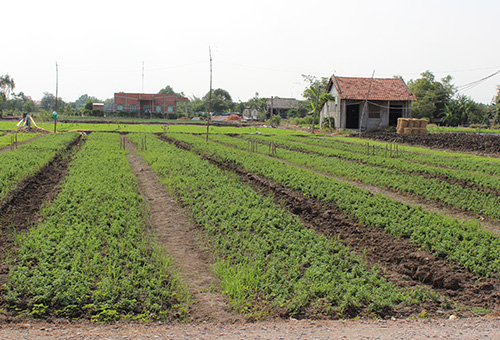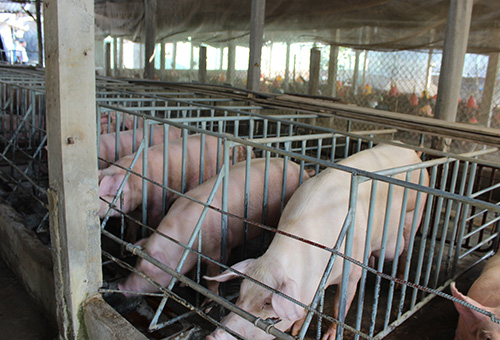Why Vietnam?
Over recent years, Vietnam has experienced a strong increase in economic growth and currently has one of the fastest-growing economies in the Association of Southeast Asian Nations. Incidences of poverty have also dropped. In 1993, 50% of the population lived below the poverty line. (1) A strong economy has helped this number decline to below 3% of the population in 2016. (2) Agriculture continues to expand in Vietnam but is met with increasing environmental challenges. This study abroad pro
gram will focus on these food security and food safety issues and examine the environmental challenges with modern-day agriculture.
Future goals include utilizing technological advances and applying them to agricultural production to improve efficiency and productivity. There is also a strong focus on increasing reliability of quality and quantity of agricultural products.
Vietnam Agriculture
- Agriculture employs over 50% of the Vietnamese population.
- In 2016, 70% of the 90.6 million people living in Vietnam lived in rural areas of the country. (3)
- In order to compete in the global market, Vietnam must improve the consistent supply, quality, and safety of produced food. (4)
- Vietnam is the 2nd largest rice exporter in the world and rice production occupies 94% of arable land.
- Thatched Roof HutOpen AIr Market, Ho Chi Min City
 .
. 
Crop Production
- Vietnam is one of the top exporters of rubber, coffee, pepper, cashew nuts, wood products, and fisheries.
- Vietnam is the second biggest rice exporter in world. (3)
- Rice is most important crop and is grown primarily in the Red River delta (North) and Mekong river delta (South). (3)


Animal Production
Vietnam spent 4 billion US dollars to import animal feed and materials for feed production in 2013. (5)
Increased challenge of expanding animal production on environmental pollution. (3)
Increased challenge of expanding animal production on environmental pollution. (3)
Pork Production

- Pork accounts for about 70% of all livestock products.
- Small-scale pig production accounts for 80% of the total pork production.
- Per capita consumption of pork is expected to grow at an annual rate of 8%.
Poultry Production

- 98% of all households have some degree of traditional household production. (6)
- Poultry production provides cash income for village families and an inexpensive source of animal protein.
- Local breed characteristics preferred among Vietnamese consumers over foreign imported breed.
- Local chicken production grew 9.3% between 2003 and 2012, but the overall production efficiency has declined. (7)
Dairy Production

- Vietnam hopes to increase milk production to meet per capital consumption of 20 kg by 2020.
- Vietnam plans to meet 60% of domestic demand for milk for the country’s projected population of 113 million by 2045. (2)
- Milk quality is a major concern for the Vietnamese public.
Aquaculture
- Globally, Vietnam ranks in the top 5 for aquatic products. (4)
- Vietnam’s annual aquaculture exports are valued at US$7 billion. (9)
- Disease, lack of technology, and antibiotic residues a major concern for Vietnamese agriculture.


Environmental Challenges
- The increase in agricultural development has influence on the natural resources of Vietnam and increased pollution caused by animal production. (3)
- Vietnam was impacted by a severe drought in 2016.
- One of the top 5 countries expected to be impacted by climate change.
- Annual average temperature increase 0.5°C from 1958-2007. During this time annual rainfall increased in the southern climate zones, while there was a decrease in the northern regions. (10)
- In recent years there has been an increase in strength and frequency of extreme weather, disasters, sea level rise, land erosion and slides.
Sources
1. UNDP Vietnam, 20073. vietrade.gov.vn
4. Vietnam Development Report, 2016
5. http://www.wattagnet.com/articles/24004-vietnam-poultry-producers-must-improve-productivity
6. http://www.fao.org/docrep/013/al693e/al693e00.pdf
7. http://www.wattagnet.com/articles/24004-vietnam-poultry-producers-must-improve-productivity
8. http://www.fao.org/docrep/011/i0588e/I0588E11.htm
10. https://unfccc.int/files/adaptation/application/pdf/viet_nam_summary_cca.pdf

